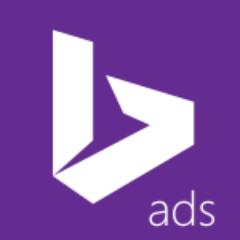
It’s been a big year so far for product listing ads on both Google and Bing. Google started putting more ads in the Knowledge Graph. Bing followed Google’s lead on combining tablet and desktop traffic. And Google said it would begin stripping paid search queries from referrer strings. Now that we’re halfway through the year, let’s step back and look at what’s happened so far in paid search.
These were the 10 biggest announcements and changes to come from Bing Ads and Google AdWords in the first half of 2014.

Bing Ads
There were three announcements made by Bing Ads in the first half of the year that stand out:
1. Bing Ads Launches Product Ads In U.S., Mobile Version Now In Beta
This is fairly big news for merchants that have seen so much success with Google Product Listing Ads. While early testers, not surprisingly, have seen lower volume, most agree the addition of product ads on Bing is a good move and worth setting up. Look for more advertisers coming on board ahead of the holiday sales season.
2. Bing Ads Tweaks Its Tune: Desktop/Tablet Traffic To Be Combined, Adding Tablet Bid Modifier
Coming closer to conforming completely to Google AdWords — and going back on earlier statements — Microsoft said that it would be combining tablet and desktop traffic. The reason given is that the combination makes Bing Ads more attractive for advertisers that are importing campaigns from AdWords (i.e., most advertisers) to have greater parity between the two platforms.
Bing Ad’s carrot to advertisers who want device control is to offer a tablet bid modifier that ranges from -20 percent to +300 percent. With that range, you can almost opt out of desktop traffic with a +300 percent tablet bid modifier, though you probably can’t get rid of too much tablet traffic with just a negative 20 percent bid reduction.
David Pann, general manager of Bing Ads, said the team will continue to “more closely align” device targeting with enhanced campaigns and rely on bid modifiers rather than explicit device bids. What they’ve shown with the first move on this front is that while they’re moving towards parity, there are areas of differentiation that advanced advertisers will appreciate.
3. Bing Ads URL Auto-Tagging Finally Arrives
Hallelujah, this was big for Bing Ads. The top request from advertisers for at least three years has been to have the ability to auto-tag destination URLs with UTM tags so that performance data can pass to Google Analytics. Why it took so long, is somewhat baffling (Bizible, a third party firm that focuses on SalesForce integrations with Analytics, came out with a free tool last year that does just this and is actually even more customizable), but it’s here.
Now that auto-tagging is off the to-do list, the engineering team should have some freed up time to spend on the second-biggest request: a Mac version of Bing Ads Editor. We keep hearing it’s in the works….
Other updates and announcements from Bing Ads included reporting UI updates including the addition of more robust conversion performance insights, zero-click search queries, advertisers with large accounts can now see up to 50,000 keywords in the web interface, andbid landscape debuted at the keyword level and is now available at the ad group level. Bing Ads Editor has had two versions roll out already this year, with one in February and another in June that includes several new targeting enhancements. Mobile sitelinks were made available to all US traffic.
I have heard from several people on the Bing Ads team that this summer is going to be an exciting time in terms of releases, so stay tuned.

Google AdWords
Google made a notable personnel move early this year in making Sridhar Ramaswamy the sole head of Ads & Commerce, but he’s stayed below the radar so far this year. Ramaswamy had shared the SVP, Ads & Commerce title with Susan Wojcicki until she moved over to run YouTube. Ramaswamy oversaw the development and rollout of both enhanced campaigns and Google Shopping becoming a paid solution.
There were seven announcements from Google that are notable from the first half of 2014.
4. Out Of Beta: Google Shopping Campaigns For PLAs Now Available Globally
Google continues to make significant investments in Google Shopping and its successful PLA format with the aim of getting more merchants participating and more consumers clicking as it competes aggressively with Amazon in product search.
Google’s new campaign format for product listing ads, Shopping Campaigns, are designed to be easier to set up and manage than the original version. The company has announced that original PLA campaigns will sunset in August.
The move to Shopping Campaigns shows that Google sees much more opportunity in the PLA format and Google Shopping. RKG reported that PLAs drove 29 percent of clicks among its retail clients in the first quarter of 2014. It wouldn’t be surprising if that number continues to rise. (Interestingly, Facebook just entered the product ad market in a bold way with Multi-Product Ads.)
5. Google Testing More Ads On Knowledge Graph Panels
We saw several of examples of Google testing various ad types in new formats including within Knowledge Graph panels. It originated in December with sponsored local car dealership listings showing inside car Knowledge Graph results. In February, ads for streaming services including Google Play were spotted on the Knowledge Panel for movie results.

Then in March, a variation of a product listing ad appeared in the Knowledge Panel for a book. In April, PLAs were spotted at the top of the page in the carousel interface.
This trend of testing new ways to inject ads into the search results, using features that were originally designed solely for serving organic content, is likely to continue
6. Google’s “Step Inside AdWords” News: Features For App Ads, More UI Tools, No Wild Surprises
In an event that was over-hyped, Google made several announcements around advertising capabilities for app marketers and a cool reporting functionality that allows managers to build pivot-like tables in the Web UI.
Was it major news for most advertisers? No, but it’s included it here for two reasons. One, because the lead-up was so amped by Google that instead of getting people excited it had people fearing the worst: enhanced campaigns part deux. Two, because it underscores the growth of app marketing and mobile advertising as a whole. Google faces competition from Facebook’s ad exchange, FBX, and its ad units for app marketers, Twitter and its mobile network Mopub, and other mobile ad networks that have come out with their own app ad units. This was Google’s first concerted effort to step up their own capabilities in this arena.
7. Google Injects Google Shopping With Amazon Talent In Rangespan Acquisition
This acquisition didn’t cause any immediate changes for advertisers, but it holds potentially significant future implications for Google Shopping. Rangespan gave merchants the opportunity to identify and source top-selling products from large suppliers, and offered cross-sell suggestions and price competitiveness reporting. The entire team has joined Google Shopping. For a look at what the future of Google Shopping may hold, check out the presentation given by Frank Koschenash of Mercent at SMX Advanced this year.
8. Official: Google Brings “Not Provided” To Ads

This announcement probably made the biggest waves in the paid search (and SEO) community so far this year. Google said it recognized the discrepancy in not passing search queries from organic clicks in the referrer string while allowing marketers that pay for ads to get that data in analytics. The company said it would no longer pass the search query in the referrer string on paid ad clicks, essentially bringing “not provided” to PPC. Yet, search queries are still available in AdWords. Interestingly, the Matched Search Queries report in the AdWords section of Google Analytics still exists and continues to populate.
9. AdWords Editor Version 10.4 Arrives With Bid Strategies Support
This update was most notable for the fact that it happened at all. Editor has been lagging behind the Web UI, and there have been thoughts that Google will eventually ditch support for the tool entirely. The version released in April included support for automated bidding strategies, viewable impression bidding, engagement ads and more, but it still lacks functionality available on the web.
10. Google Debuts AdWords Consumer Ratings Annotations In US, UK & Canada
While this may not be directly affecting a large number of advertisers yet, Google’s announcement that it has been conducting consumer surveys on brands and merchants and has begun automatically populating ads with ratings feedback is significant for a couple of reasons. First, it shows that Google is sitting on yet another trove of data, this one garnered from its Google Consumer Surveys (GCS) platform. It also underscores a larger effort to find new ways to incorporate ratings and reviews into ads in ways that can’t be manipulated by advertisers.




No comments:
Post a Comment